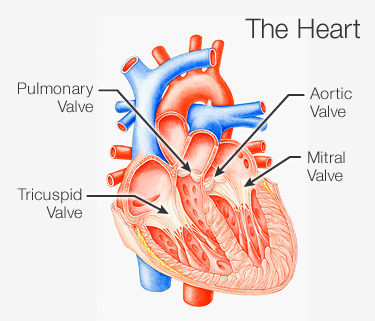What mechanisms are in place to prevent the blood from flowing in the wrong direction through the heart?
1 Answer
The heart contains valves between the chambers and between the ventricles and major blood vessels leaving the heart to ensure blood flow in one direction.
Explanation:
The chambers of the heart and the major blood vessels leaving the heart have valves that regulate the flow of blood in one direction to prevent mixing of oxygenated and de-oxygenated blood.
The valves have leaves or cusps that fold in the direction of blood flow; if blood is reversed in flow, the flow forces the cusps closed and prevents blood from flowing in the reverse direction.
The four valves are:
1. Mitral Valve: It connects the left auricle (atrium) with the left ventricle. It is also known as the bicuspid valve as it has two cusps.
2. Tricuspid Valve: It connects the right auricle (atrium) with the right ventricle. It is so called because it has three cusps.
3. Aortic Valve: It connects the left ventricle with the aorta that supplies oxygenated blood to the body. It has three cusps.
4. Pulmonary Valve: It connects the right ventricle with the pulmonary artery that conveys de-oxygenated blood to the lungs for oxygenation. It has three cusps.

